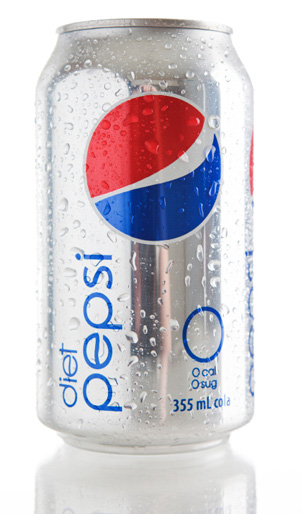There’s a new Diet Pepsi in several cities around the U.S., which now lists a new ingredient on the cans and bottles. It’s called acesulfame potassium, also known as Acesulfame K or Ace K.
This quiet change is apparently not going to change the taste of the soda, but is meant to add shelf life by allowing the “fresh” taste and flavor to last longer. The project’s goal is to give the old/current base sweetener (aspartame) a jump kick because of its sensitivity to heat and susceptibility to breaking down. Ace K has proven to be less sensitive to heat.
So what exactly is Ace K? Acesulfame potassium is another form of an artificial sweetener that is calorie free and about 200 times as sweet as everyday table sugar. Due to its slightly bitter aftertaste, it is often mixed with other artificial sweeteners (in this case it was mixed with Diet Pepsi’s aspartame). It’s often found in many baked goods, processed foods and other soft drinks similar to Diet Pepsi.
“Aspartame breaks down during storage especially when the temperature is high (that’s why you can’t bake with it) and so this is a good move on Pepsi’s part,” said our resident dietitian, Mary Hartley, RD. “The move has nothing to do with the safety of aspartame, which has been found to be safe in scientific studies time and again.”
That might be one positive factor, but is it enough to make it OK to be consuming the other harmful ingredients listed on the back?
Other studies have shown that artificial sweeteners can sometimes interrupt the body’s natural instinct to gauge calories, which can lead to wanting to eat more of them. Basically, they are not made to satisfy hunger.
So what else should you be worried about in diet sodas including this one? Hartley says, “Other than artificial sweetener, diet soda is also filled with coloring, preservatives and other additives. Except for taste, there is no reason to fill the body with these substances nor to spend hard-earned money on this unnecessary food.”
So far, the new Diet Pepsi has been found in cities such as New York, Omaha, Neb., and the San Francisco Bay area. It’s been estimated that the product will be on all shelves in the U.S. by this upcoming February after retailers have moved out their current inventory.
Also Read:
Pepsi Special Aims to Make the Japanese Skinner by Adding Fiber
